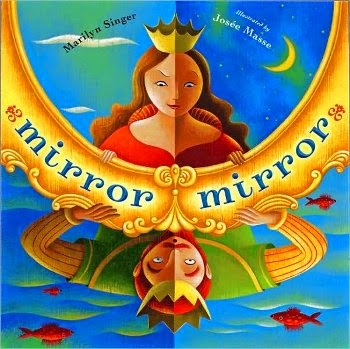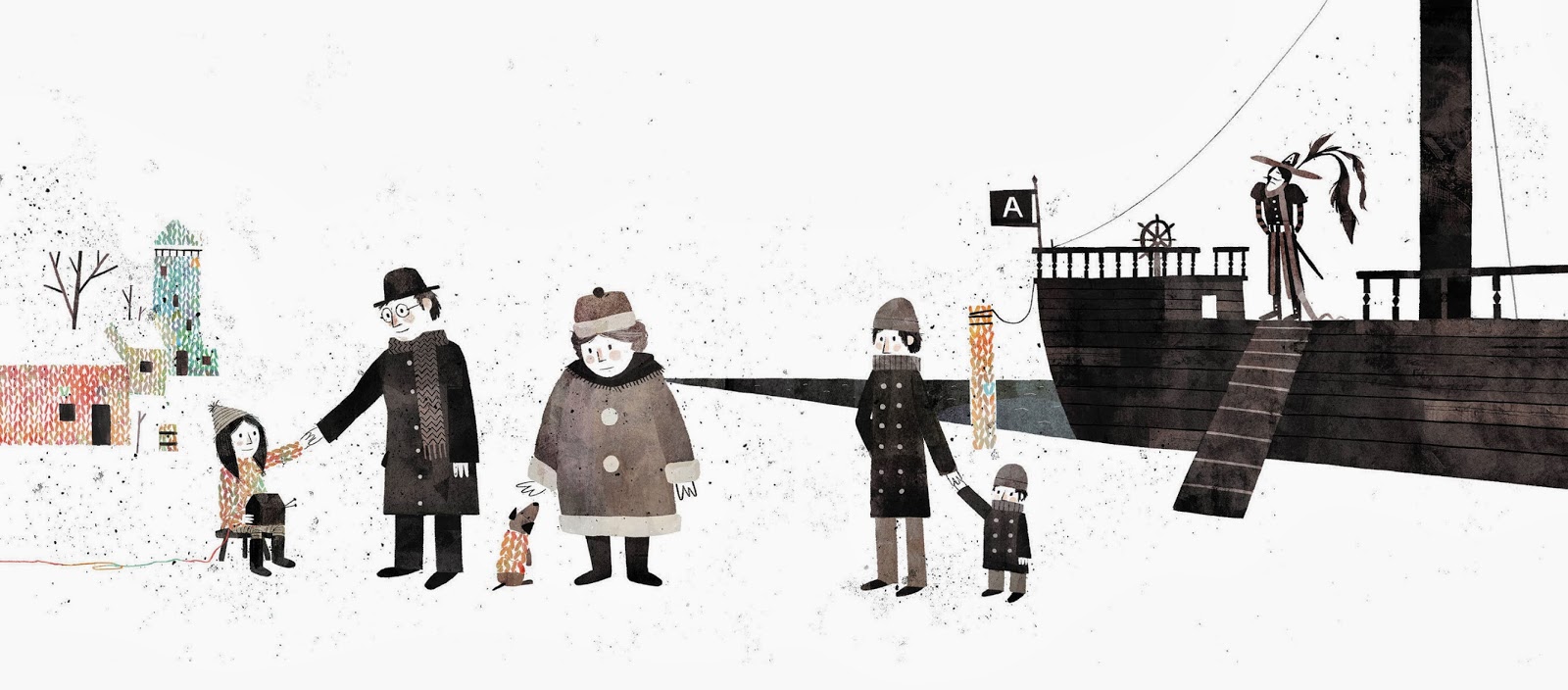The
Watson’s Go to Birmingham – 1963 by Christopher Paul Curtis was published
in 1995 by Delacorte Press. It has won many awards including the Coretta Scott
King award, the Newberry Honor, and the Golden Kite Award. I have to say that I
was pleasantly surprised by this novel because I am not normally a historical
fiction fan. This story follows the Watson family through their daily life in
Flint, Michigan. I really grew to love this family and I believe that was what
Curtis intended. I was surprised how far into the book I was before any segregation/racial
inequality themes were brought up. But Curtis wanted to ensure that we fell in
love with the family first.
Ten year old Kenneth or “Kenny”
Watson is our narrator. He is very smart and has a lazy eye
which makes him the target of much bullying at school. We are introduced to his
family as they are shivering at home trying to stay warm by huddling together
one cold, Michigan winter. They live in Flint, Michigan, although Momma is from
warm Alabama. Sweet, younger sister Joetta or “Joey” is in Kindergarten and
very impressionable while older brother Byron or “By” is the tough guy of the
school and family. Momma and Daddy seem to still be very much in love and act
as normally as any married couple I know today.
We watch as Kenny encounters school
bullies, classes, new country friends, and old toy-stealing friends. Byron is
the family rebel and is constantly getting in trouble and pushing his parent’s
buttons. From skipping school to lighting fires to starting fights, Byron seems
to do the opposite of everything he is supposed to do. He is a
complicated young man going through a lot of changes. He is emotional and
conflicted yet always watches out for his younger siblings. But one day Byron
upsets his parents for the last time by getting a “conk” hair cut which
apparently was the popular style in the 1960’s. I’m not ashamed to admit I had
to Google search what a “conk” looked like. Anyway, his parents decide it’s
time for Byron to go live with their Grandma Sands in Birmingham, AL for the
summer of ’63. Mr. Watson suits up the “Brown Bomber” car and the family
endures a three day road trip to Alabama to drop of Byron. When they arrive, it
seems that Byron is actually happier being in Birmingham while Kenny and Joey
are absolutely miserable with the never-ending heat. Kenny is actually the first one to disobey parental
orders this time by going swimming in the whirlpool (or Wool Pooh as they
called it) at Collier’s Landing. The three children had been warned not to and
Byron and Joey listened but Kenny did not. He almost drowned in that whirl pool
but thankfully his siblings got him out. Poor, Kenny, The one time he doesn't obey the rules he almost gets killed for it!
Then one Sunday morning, the
neighbors and Joetta went to church. Not too long afterward they all heard a
giant boom sound. It turned out that it was the 16th Avenue Baptist Church
bombing that we all know too well. When the family ran to see if Joetta was hurt, Kenny followed, and
actually went inside the church. It was there that he was traumatized by seeing
three dead little girls and he assumed one of them was Joey. He ran home traumatized and upset. Thankfully, Joey
was not hurt, but many other people were. She had actually left the church
early because she was too hot and thought she saw Kenny waving to her across
the street. The rest of the book explains how traumatized Kenny was by seeing
those deceased girls and thinking one of them was his sister. In the end, Byron
ends up pulling Kenny out of his depression and showing him that he saved Joey. I really enjoyed how the book wrapped up all strings for the
Watson family. But I can’t help but feel sadness for the lives lost in the 16th
Avenue Baptist Church bombing in Birmingham, Alabama as well as all other people
affected by racial prejudice.
On a more positive note, I laughed a lot while reading this book! The interactions within the family were hilarious. Byron and Kenny reminded me so much of my brother and I except reversed. I am older but a rule follower like Kenny and my younger brother is the Byron of the family. All of their antics together including the arguments, name calling, and even sticking up for each other, made me laugh out loud and reminisce of my childhood in Illinois. I couldn't help but feel a connection to these characters that I didn't expect to feel. My father is from St. Louis but moved to Birmingham, Michigan in the mid-1960's which is about 50 miles south of Flint.
Two scenes had a particularly strong effect on me. The first was when the
neighbor Mrs. Davidson gave Joey an angel that was white with blue eyes,
dimples, and rosy pink cheeks. Joey hid the angel in her sock drawer because
she didn’t think the angel looked like her. Her mother came upstairs and the
exchange went like this:
Momma: “Sweetheart, I can see how it reminds her of you.
Look at that dimple.”
Joey: “But Mommy, it’s white.”
Momma: “Well, honey, I can’t say it isn’t, but an angel’s an
angel, what do you think?”
Joey: “Maybe, but I know that angel’s name isn’t Joetta Watson,”
(Curtis 128-129).
I was conflicted with this scene in the story because I
couldn’t decide how I should feel. Should I feel sadness that Joey already is
well aware of her race or should I be happy that she is and wants to stay true to her
identity? I did enjoy Momma’s attempt at making Joey appreciate the angel and
indirect notion that people are people no matter the color. But I do wish
Curtis took this scene a bit deeper and led Momma and Joey into a conversation
about race and equality. Yes, Joey is only a Kindergartener, but clearly she is
well aware of race and could handle said conversation.
The second scene that really got to
me was the church bombing, respectively. I actually had to reread this section
a few times to fully comprehend the events that transpired. I was shocked to
come to terms with these events in the story let alone realizing they were REAL. Although racism is still alive in the world it has
definitely toned down since the 1960’s. I have never lived in a world of
segregated bathrooms, schools, and drinking fountains and it always seemed like
the civil rights movement happened so long ago. But in reality, it really wasn’t
very long ago, was it?
Interestingly enough, in the "About the Author" section at the back of the book we learn that Curtis was born and raised in Flint, Michigan. This gave the book a whole new level of validity that I did not have before. He does mention in the Epilogue that the characters and events in the story are fictional. After some research on Curtis I learned that he was born in 1953 which would have made him ten years old when the story took place; the same age as Kenny and in the same town. Interesting.
The Watson’s Go to
Birmingham perfectly illustrates life in the 1960’s for an African-American
family and it is sure to leave a mark in children’s hearts forever. The Epilogue does a fantastic job giving factual information on the civil rights movement and inspiration for the book. I definitely recommend it as a young adult novel for studying historical fiction, the civil rights movement, and equality.

.jpg)















.jpg)








